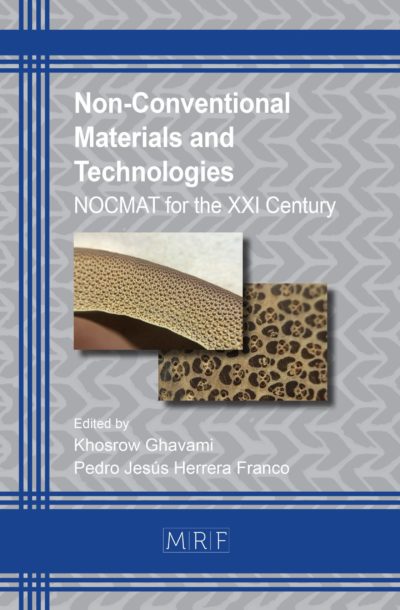Effect of process parameters on mechanical properties of photopolymeric resin in masked stereolithography
Marina Andreozzi, Iacopo Bianchi, Tommaso Mancia, Chiara Mignanelli, Michela Simoncini, Tommaso Verdini
Abstract. This study investigates the influence of process parameters on the mechanical properties and energy consumption of photopolymeric resins in the Masked Stereolithography (MSLA) 3D printing process. ELEGOO technology and resin were used to manufacture tensile specimens, according to ASTM D638-22 standards. The study employed a Full Factorial Design varying layer thickness (LT) and exposure time (ET) across three levels. Ultimate Tensile strength (UTS) and energy consumption were analyzed through experimental testing and nonlinear regression modelling. Results reveal that UTS decreases with increased LT, while higher ET enhances UTS. Energy consumption decreases as LT increases but rises with an increase of ET. Predictive models of UTS and Energy Consumption demonstrated high accuracy with R² values of 0.99 for both UTS and energy consumption, indicating their robustness in prediction process dynamics. These findings provide critical insights for optimizing MSLA printing to balance mechanical performance and energy efficiency.
Keywords
Vat Polymerization, Mechanical Properties, Exposure Time, Layer Height
Published online 5/7/2025, 10 pages
Copyright © 2025 by the author(s)
Published under license by Materials Research Forum LLC., Millersville PA, USA
Citation: Marina Andreozzi, Iacopo Bianchi, Tommaso Mancia, Chiara Mignanelli, Michela Simoncini, Tommaso Verdini, Effect of process parameters on mechanical properties of photopolymeric resin in masked stereolithography, Materials Research Proceedings, Vol. 54, pp 96-105, 2025
DOI: https://doi.org/10.21741/9781644903599-11
The article was published as article 11 of the book Material Forming
![]() Content from this work may be used under the terms of the Creative Commons Attribution 3.0 license. Any further distribution of this work must maintain attribution to the author(s) and the title of the work, journal citation and DOI.
Content from this work may be used under the terms of the Creative Commons Attribution 3.0 license. Any further distribution of this work must maintain attribution to the author(s) and the title of the work, journal citation and DOI.
References
[1] Engineering Journal Al A-K, Raed Mhmood T, Kais Al-Karkhi N. A Review of the Stereo lithography 3D Printing Process and the Effect of Parameters on Quality. Al-Khwarizmi Engineering Journal 2023;19:82–94. https://doi.org/10.22153/KEJ.2023.04.003
[2] Orzeł B, Stecuła K. Comparison of 3D Printout Quality from FDM and MSLA Technology in Unit Production. Symmetry 2022, Vol 14, Page 910 2022;14:910. https://doi.org/10.3390/SYM14050910
[3] Msallem B, Sharma N, Cao S, Halbeisen FS, Zeilhofer HF, Thieringer FM. Evaluation of the Dimensional Accuracy of 3D-Printed Anatomical Mandibular Models Using FFF, SLA, SLS, MJ, and BJ Printing Technology. J Clin Med 2020;9. https://doi.org/10.3390/JCM9030817
[4] Bianchi I, Forcellese A, Mancia T, Simoncini M. Tensile properties and sustainability assessment of vat photopolymerization 3D printed components with recovered plastic filler. International Journal of Advanced Manufacturing Technology 2023;129:2171–82. https://doi.org/10.1007/S00170-023-12412-Y/FIGURES/10
[5] Huang J, Qin Q, Wang J. A Review of Stereolithography: Processes and Systems. Processes 2020, Vol 8, Page 1138 2020;8:1138. https://doi.org/10.3390/PR8091138
[6] Ge Q, Li Z, Wang Z, Kowsari K, Zhang W, He X, et al. Projection micro stereolithography based 3D printing and its applications. International Journal of Extreme Manufacturing 2020;2:022004. https://doi.org/10.1088/2631-7990/AB8D9A
[7] Milovanović A, Montanari M, Golubović Z, Mărghitaş MP, Spagnoli A, Brighenti R, et al. Compressive and flexural mechanical responses of components obtained through mSLA vat photopolymerization technology. Theoretical and Applied Fracture Mechanics 2024;131:104406. https://doi.org/10.1016/J.TAFMEC.2024.104406
[8] Melchels FPW, Feijen J, Grijpma DW. A review on stereolithography and its applications in biomedical engineering. Biomaterials 2010;31:6121–30. https://doi.org/10.1016/J.BIOMATERIALS.2010.04.050
[9] Borra ND, Neigapula VSN. Parametric optimization for dimensional correctness of 3D printed part using masked stereolithography: Taguchi method. Rapid Prototyp J 2023;29:166–84. https://doi.org/10.1108/RPJ-03-2022-0080/FULL/PDF
[10] Temiz A. The Effects of Process Parameters on Tensile Characteristics and Printing Time for Masked Stereolithography Components, Analyzed Using the Response Surface Method. J Mater Eng Perform 2023;33:9356–65. https://doi.org/10.1007/S11665-023-08617-7/TABLES/6
[11] Štaffová M, Ondreáš F, Svatík J, Zbončák M, Jančář J, Lepcio P. 3D printing and post-curing optimization of photopolymerized structures: Basic concepts and effective tools for improved thermomechanical properties. Polym Test 2022;108:107499. https://doi.org/10.1016/J.POLYMERTESTING.2022.107499
[12] Valizadeh I, Tayyarian T, Weeger O. Influence of process parameters on geometric and elasto-visco-plastic material properties in vat photopolymerization. Addit Manuf 2023;72:103641. https://doi.org/10.1016/J.ADDMA.2023.103641
[13] Makalesi A, Temi̇z A. The Tensile Properties of Functionally Graded Materials in MSLA 3D Printing as a Function of Exposure Time. Journal of Materials and Mechatronics: A 2024;5:49–59. https://doi.org/10.55546/JMM.1413577
[14] Kim D, Shim JS, Lee D, Shin SH, Nam NE, Park KH, et al. Effects of Post-Curing Time on the Mechanical and Color Properties of Three-Dimensional Printed Crown and Bridge Materials. Polymers (Basel) 2020;12:1–20. https://doi.org/10.3390/POLYM12112762
[15] Martín-Montal J, Pernas-Sánchez J, Varas D. Experimental Characterization Framework for SLA Additive Manufacturing Materials. Polymers 2021, Vol 13, Page 1147 2021;13:1147. https://doi.org/10.3390/POLYM13071147














